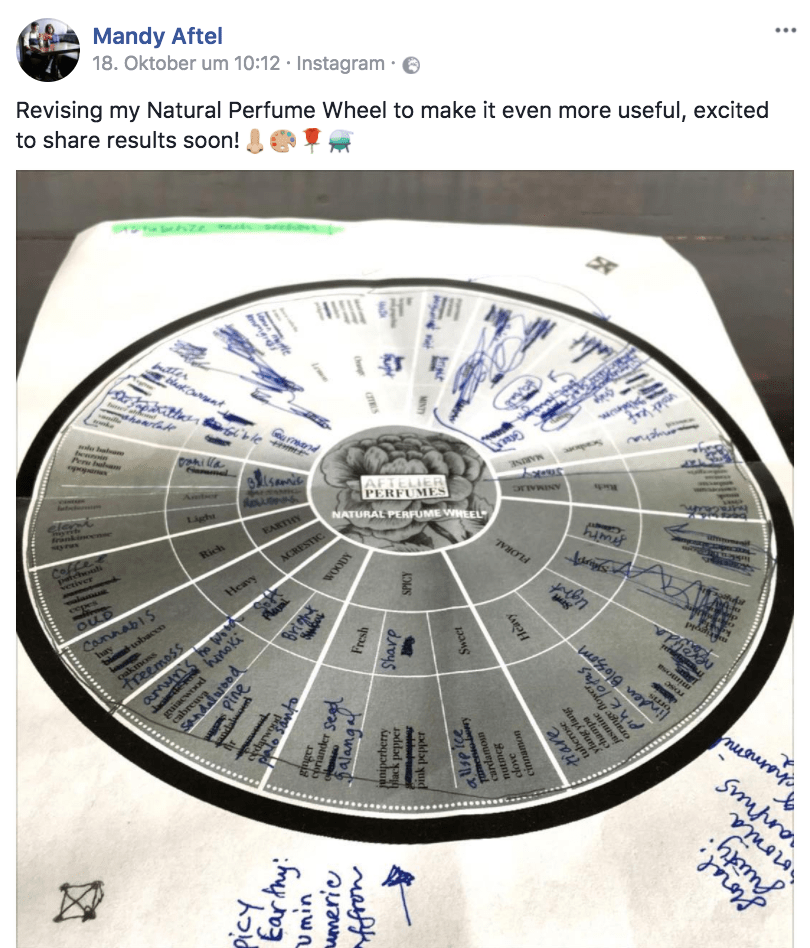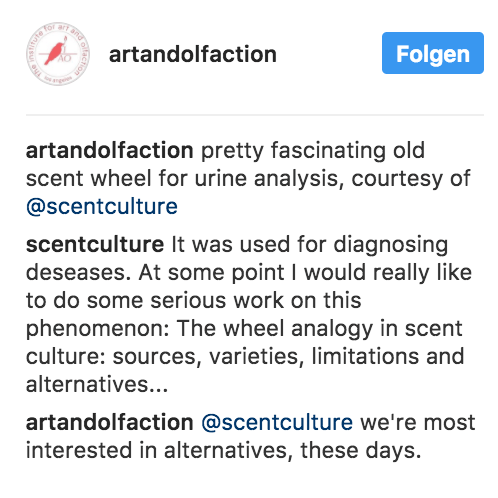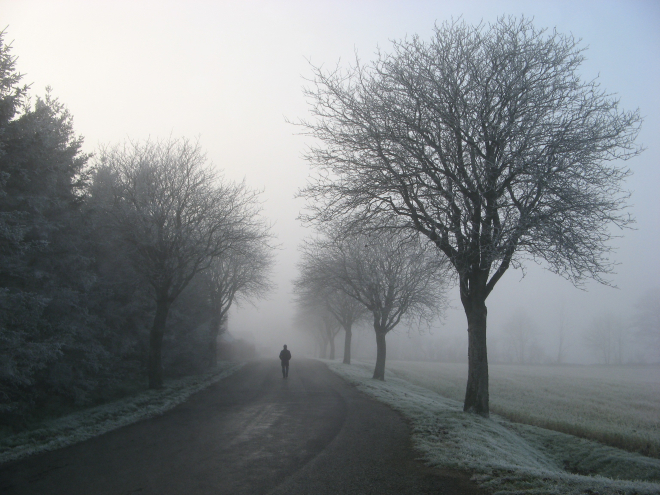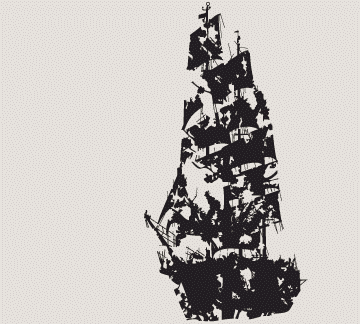Visual representations of smell are one of the core themes of our presence on Instagram: Wheel, circle, and pie have recently appeared as recurring and influential visual metaphors. The fragrance wheel created by Michael Edwards is perhaps the most prominent example these days. But the history of visualizations demonstrates that this is only one example out of many. The visual metaphor of the circle or the wheel has been used to classify urine smells. The colour, smell, and even taste of urine was used to both identify particular illnesses and provide patient prognoses, from Hippocrates to the Victorian era. The practice, called uroscopy or uromancy, was, according to the Doctor’s Review, “once the number-one way to diagnose disease — and predict the future”.
To our knowledge, the Fragrance Circle designed by Drom around 1911 is the earliest example of the wheel in the world of perfumery. Since then numerous variations have been created and promoted:
“Wondering why do we need this classification, grouping to Wheel itself? Well! Sometimes a women’s relationship with their perfumes lasts longer than their boyfriends. But some of us get bored within a month or even less. With plethora of choices available, it’s easy to make a wrong choice. One way to avoid it is to sticks to one’s ‘fragrance wheel category.’ The Fragrance Wheel allows us to uncover true character of fragrance, independent of brand and marketing. If also quickly tells us about the relationship between various different scents from all kinds of brands.”
However, the history of the use of the wheel in perfumery also demonstrates some of the limitations of the circle form:
The circle conveys an idea of completeness. The circle represents a universe – a whole. How do you cope with new molecules? And new olfactory notes? The history of perfumery shows that new notes have repeatedly been discovered for the world of perfumery. If you want to claim that the fragrance wheel represents a universe you have a hard time to look for new notes because they should be within the circle. In other words: There is no note beyond the wheel! Thus I even want to argue that the use of the fragrance wheel turns into a barrier for innovation in perfumery!
What is suprising is that our efforts coincide with related activities at other centers for scent culture: A few day ago Mandy Aftel for example shared on Facebook some snapshot of her ongoing revision of the Afterlier Natural Perfume Wheel.

Moreover, the Institute for Art and Olfaction expressed interest in alternative visual representations on instagram:

Is this by any chance another chapter on singletons and multiples as Robert Merton once discussed it in the sociology of science?
Have a look and join the discussion by email to [email protected], here or on https://www.instagram.com/scentculture/.
Postscriptum:Please note Avery Gilbert’s response to our short post: “Spinning One’s Wheels” on his blog (here). Given the current teaching load it will take a few weeks until we can come back to this. For the time being we are going to share some more examples on our Instagram profile. Once again: If you have come across other examples, stories or observations, we are very interested to learn more about it.
Claus Noppeney ([email protected])
Thank you for sharing this:





